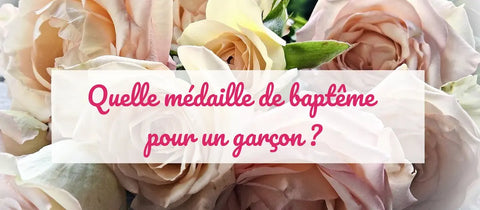
How to recognize real pearls on a necklace?
of reading - words
You've heard of cultured pearls, but you're wondering how to tell them apart from real pearls?
And how do you assess their value? Don't worry, we have all the answers to your questions!
In this article, we will take a detailed look at how to assess the value of a pearl necklace.
So, ready to become pearl experts? Let's go!
How do you know if a pearl necklace is valuable?
What is a genuine pearl?
A genuine pearl is one that has been formed naturally in the shell of a mollusk.
Cultured pearls can also be considered authentic, as they are created artificially but using methods that mimic nature.
How to identify an authentic pearl?
There are several methods to identify a genuine pearl. One of the most common methods is to observe the pearl's visual properties , such as size, shape, luster, and surface.
It is also possible to use physical tests and advanced tests to verify the authenticity of a pearl.
How are genuine pearls created?
Freshwater pearls
Freshwater pearls are pearls that form naturally in freshwater mollusks. They are generally smaller and less expensive than saltwater pearls.Cultured pearls
Cultured pearls are pearls that have been artificially created by inserting a nucleus into a mollusk and allowing it to grow.
Cultured pearls are generally larger and more expensive than freshwater pearls.
The imperfection of nature
Imperfections of natural pearls
Natural pearls may have imperfections such as spots, shape irregularities and surface imperfections.
These imperfections are often considered unique characteristics that add to the pearl's value.
Imperfections of cultured pearls
Cultured pearls may also have imperfections, but they are generally rarer and less pronounced than those of natural pearls.Classification of cultured pearls
Freshwater cultured pearls
Freshwater cultured pearls are often smaller and less expensive than saltwater cultured pearls.Cultured saltwater pearls
Cultured saltwater pearls, also called Akoya pearls, are primarily produced in the warm waters around Awaji Island in Japan and in the waters around China.
These are the oldest pearls produced in culture.
How to recognize an authentic cultured pearl?
How to identify an authentic cultured pearl?
There are several ways to identify a genuine cultured pearl. One of the most common methods is to check if the pearl has a regular shape , as cultured pearls tend to have a more regular shape than natural pearls.
It is also important to check whether the pearl has a uniform luster, as cultured pearls generally have a brighter luster than natural pearls.
Finally, you can check the pearl for imperfections, as cultured pearls tend to have fewer imperfections than natural pearls.
How to identify freshwater pearls?
Freshwater pearls are generally smaller and less expensive than saltwater pearls, but they tend to have more varied colors and shapes.
To identify a genuine freshwater pearl, you can check whether it has a regular shape and uniform luster , while paying attention to imperfections.
How to recognize an authentic Tahitian pearl?
Tahitian pearls are generally larger and more expensive than freshwater or saltwater pearls.
To identify a genuine Tahitian pearl, you can check whether it has an oval or semi-oval shape , a deep black luster, and a smooth surface.
How to recognize a fine pearl?
Fine pearls are generally larger and more expensive than other types of pearls.
To authenticate a genuine fine pearl, you can check if it has a regular shape, a bright luster, and a smooth surface .
It is also important to check the pearl for imperfections, as fine pearls tend to have fewer imperfections than other types of pearls.
Quality of pearls
There are several criteria for evaluating pearl quality, such as size, shape, luster, surface, and color.
Recommended reading: How to choose the right wedding jewelry?
The higher the quality of a pearl, the more expensive it will be. It is important to remember that both natural and cultured pearls have unique characteristics that make them one-of-a-kind and valuable.
Value of pearls
The size of a pearl
The size of pearls also plays an important role in their value. Larger pearls are generally more expensive than smaller ones . However, this also depends on the overall quality of the pearl.The shape of the pearls
The shape of pearls is also an important factor in their value. Round pearls are considered the most valuable , as they are the rarest and most sought after.
Oval pearls, pear-shaped pearls, and baroque pearls are also popular, but can be less expensive than round pearls.
The luster of a pearl
A pearl's luster is another important criterion for assessing its value. Pearls with a high luster are considered to be of higher quality and therefore more expensive.
Pearls with a dull luster are considered lower quality and may be less expensive.
The surface of a pearl
The surface area of a pearl is also an important criterion for assessing its value.
Pearls with a smooth, even surface are considered to be of higher quality and therefore more expensive.
Pearls with imperfections or marks on their surface may be considered lower quality and therefore less expensive.
The color of a pearl
The color of a pearl is also an important criterion for assessing its value.
White pearls are generally considered the most valuable, as they are in greatest demand.
Pink pearls, gray pearls, and black pearls are also popular, but can be less expensive than white pearls.
Conclusion
You now have all the keys to assess the value of your pearl necklace.
Remember that a genuine pearl is distinguished by its color, shape, size, luster and surface.
Use visual, physical observation methods and advanced testing to verify the authenticity of pearls.
And remember, a genuine cultured pearl is a long-term investment!





